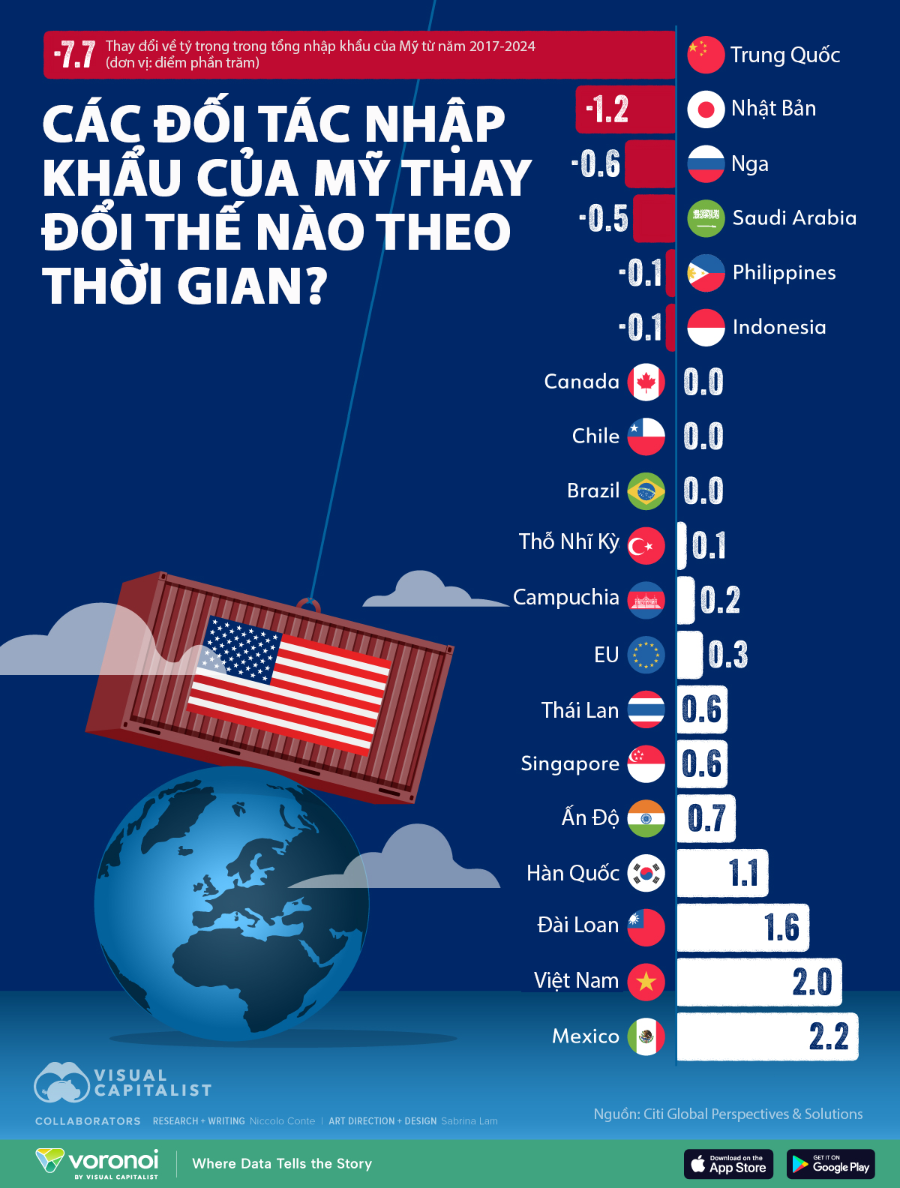
It can be seen that the United States is diversifying its sources of imported goods. Between 2017 and 2024, China’s share of total U.S. imports decreased by 7.7 percentage points. This indicates a significant reduction in imports from China since the first term of former President Donald Trump and continuing into the subsequent term of former President Joe Biden.
Major import partners losing market share in the U.S. include Japan (down 1.2 percentage points), Russia (down 0.6 percentage points), and Saudi Arabia (down 0.5 percentage points).
Rising labor costs in China, concerns over post-pandemic recovery, and efforts to diversify import markets have pushed the U.S. to strengthen trade with neighboring countries like Mexico (up 2.2 percentage points) and several Asian economies such as Vietnam (up 2 percentage points), Taiwan (up 1.6 percentage points), and South Korea (up 1 percentage point).
Although China remains an important U.S. trading partner, the decline in its share of total U.S. imports signals a structural shift in the supply chain of the world’s largest economy before President Trump’s second term.
Analysts say Mexico’s strong manufacturing base and its border with the U.S. make it an attractive alternative to China for production. Meanwhile, Vietnam has also risen in rank due to competitive labor costs and its growing role in the electronics and textile supply chains.
Source: vneconomy.vn




